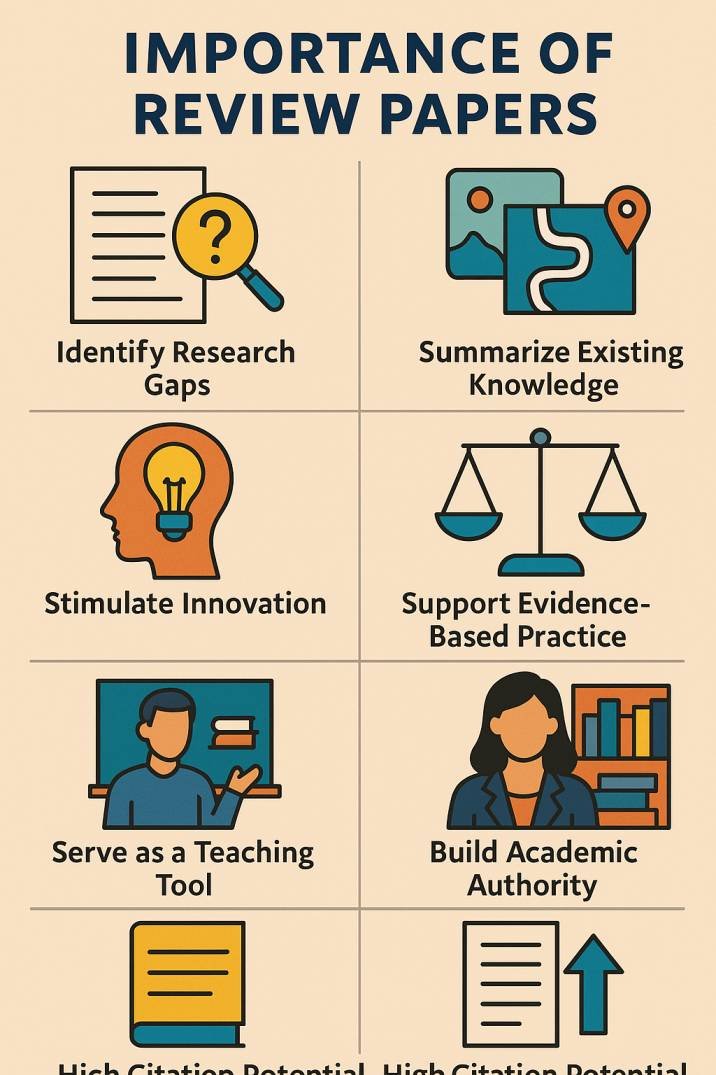Review papers play a vital role in the academic and research ecosystem. They are not just summaries of existing literature but critical tools that shape research directions, policy, and innovation.
🔍 1. Identify Research Gaps
- Review papers highlight what has been done and what is missing.
- They help new researchers find unexplored areas or unanswered questions.
📚 2. Summarize Existing Knowledge
- They provide a concise overview of a large body of work.
- Useful for students, researchers, and practitioners who want to quickly understand a topic.
🧭 3. Guide Future Research
- By identifying trends, gaps, and inconsistencies, review papers provide directions for future studies.
- They often propose new frameworks or hypotheses to test.
💡 4. Stimulate Innovation
- Bringing together findings from multiple disciplines can lead to interdisciplinary insights.
- Can inspire novel approaches, methods, or applications.
📊 5. Support Evidence-Based Practice
- In fields like medicine, education, and policy-making, review papers are used to support evidence-based decisions.
- Systematic reviews and meta-analyses are considered high-quality evidence.
🏆 6. Build Academic Authority
- Publishing a review paper enhances the author’s credibility in the field.
- Helps in becoming a recognized expert on the topic.
🛠️ 7. Serve as a Teaching Tool
- Ideal for classroom discussions, literature reviews in theses, and PhD research proposals.
- They offer organized, peer-reviewed content that’s easy to follow.
📈 8. High Citation Potential
- Review papers are widely read and often highly cited.
- They contribute significantly to an author’s academic impact and h-index.
📌 Conclusion
Review papers are foundational documents that accelerate scientific progress. They help researchers avoid duplication, synthesize evidence, and set the agenda for future studies.

Leave a Reply